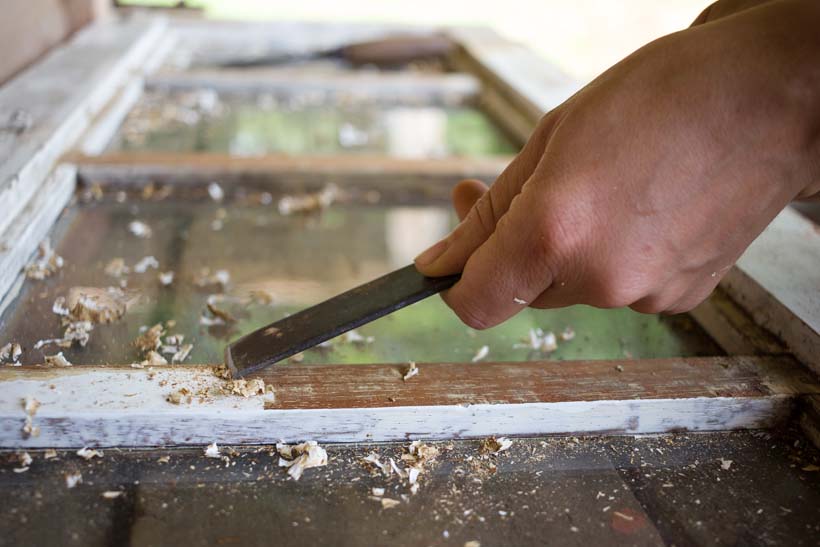Not all treasures are innocent. But that doesn’t mean we throw them away—it means we get smarter.
You know the feeling. You spot a perfect old chair on the curb. Or a velvet lampshade in a thrift store. Or a dresser with hardware that makes your heart skip. And you think: mine.
But here’s the deal: not everything old is harmless. Just because it’s been around forever doesn’t mean it’s safe. In fact, some of the most beloved vintage pieces can come with a side of toxicity—literal toxicity.
That doesn’t mean you should stop thrifting. It means you should get informed and protect yourself. That’s part of what it means to live the TGIF way: not just to love the past, but to live responsibly in the present.
MOLD: THE INVISIBLE INVADER
Old upholstery, books, art, and wood pieces—especially if they were stored in damp basements or garages—can carry mold spores. You may not see them, but your lungs will know.
What to do:
- Smell test. If it smells like a crawlspace, trust your nose.
- Sunlight + airflow. Air the piece outside in dry sun for a few days.
- HEPA vacuum. For textiles or paper, vacuum with a HEPA-filtered cleaner.
- If it’s black and fuzzy—walk away. No lamp is worth chronic bronchitis.
PESTS: YES, EVEN BED BUGS
That 19th-century fainting couch? Might be hiding some 21st-century nightmares.
What to do:
- Inspect seams, under cushions, and cracks in wooden frames.
- Freeze small items in a sealed bag for 72 hours (kills bed bugs and eggs).
- For anything upholstered, consider professional freeze or heat treatment.
Pro tip: Trust is earned, not assumed. Don’t let your love of patina blind you to live insects.
LEAD: THE LINGERING LEGACY
Painted furniture from before 1978 often contains lead—especially in chips, cracks, or worn-down surfaces. And no, “it’s probably fine” is not a safety strategy.
What to do:
- Buy an instant lead test kit (about $10). Test before use—especially if kids are involved.
- Avoid sanding lead-painted surfaces. It aerosolizes the toxin.
- Seal with shellac or encapsulating primer if you’re keeping the piece as-is.
Don’t romanticize poison. That flaky turquoise cabinet isn’t worth a neurotoxic dust storm.
WIRING: FIRE HAZARDS IN DISGUISE
Vintage lamps and appliances are beautiful. But if they’ve still got their original wires? You’re risking fire, shock, or both.
What to do:
- Look for frayed cloth cords, missing ground prongs, or loose sockets.
- Rewire with modern parts (or have a lamp repair shop do it).
- Never plug in old electrical gear without inspection.
This isn’t about fear. It’s about respect—for your home, your stuff, and your life.
🧤 THE TGIF APPROACH TO ANTIQUE SAFETY
We’re not telling you to avoid old things. We’re telling you to treat them like the complex, living histories they are. Toxicity isn’t just chemical—it’s cultural. And healing means being awake, not afraid.
Do this instead:
- Keep nitrile gloves and test kits in your toolbox.
- Learn how to rewire, reseal, or restore instead of tossing.
- Ask questions: Where was this stored? What’s it made of? Who owned it?
- Don’t be afraid to walk away from a find that’s more curse than gift.
🏁 Bottom Line
Thrifting isn’t just about scoring cool stuff—it’s about taking radical responsibility for what you bring into your space. Because in a world drowning in fast furniture, every old piece you reclaim is an act of rebellion.
Just make sure you’re not inviting mold, lead, or fire to the revolution.

Leave a Reply